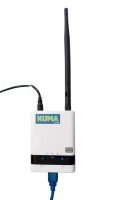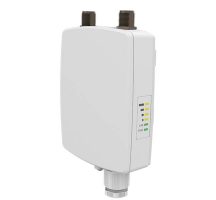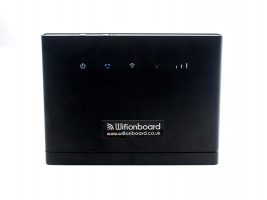Wifi boosters and routers on your boat
Although a long-range Wi-Fi antenna will help get the best out of a poor signal, they’re no use with devices that don’t have a USB port, or when the whole family want to use their phones or tablets simultaneously. For this you’ll need a wireless router that will lock onto the Wi-Fi source and then create its own local hotspot for users to join.
What are they on about? PBO glossary of terms for Wifi on your boat
Often a high-gain antenna can be plugged directly into a Wi-Fi router with a USB or Ethernet WAN port, enabling the improved Wi-Fi signal to be shared. These range from a simple mini-router with limited features, to marine-specific routers with high-gain antenna. The best of these utilise the MIMO system where a single data stream is broken down into multiple transmissions before being sent out over a number of separate antennae.
AR-3000 USB WiFi repeater
Price: £49.95
Contact: www.yachtingsoftware.com

This simple, bulkhead mountable Wi-Fi repeater works with a USB-terminated long-range antenna to provide your boat with a simple local Wi-Fi hotspot for unlimited users within range.
Bear in mind, though, the speed at which it will work will still be dependent on the bandwidth of the signal from ashore and will reduce in proportion to the number of users connected at any one time.
The AR-3000 requires 12V DC power from the boat, but is simple to configure so you should be up and running in minutes. As well as USB, it also has two Ethernet ports.
Kuma Wi-Fi Hotspot
Price: £149.99
Contact: www.acdctv.co.uk

A neat little box with a short antenna for Wi-Fi out, a LAN and WAN Ethernet socket and a USB port for connection either to the Kuma boosted antenna or a 3G cellular dongle.
Installing and configuring it is easy via a browser page and there are LEDs on the front panel indicating the current status of the device.
Said to have a maximum range of 1.5km, data transfer seems slightly slower through this router than it is directly through the Kuma antenna alone, but it does allow more than one user to share the connection.
iNAVConnect
Price: £179.95
Contact: www.digitalyacht.co.uk

Offers Wi-Fi Internet for up to 30 users when connected to a hotspot via the WL510 boosted antenna, and also allows data from an NMEA instrument network to be transmitted over Wi-Fi as well.
The box is splashproof and comes with two, screw-on 5dB stubby antennae. As well as a power cable it has a WAN socket for connection to the WL510 Internet Wi-Fi booster, as well as a LAN port for connection to NMEA. Signal strength and transmission speeds are quick – although just a tad slower than a direct LAN connection to the WL510.
YachtSurfer SurfWiFi2
Price: £249
Contact: www.yachtsurfer.net

The SurfWiFi2 is a ruggedised Wi-Fi booster that comes with a pair of 5dBi omnidirectional external antennae. Usually powered from the single Ethernet cable linking it to a PC/laptop, it can also be directly connected to either 12/24V using the voltage regulator supplied.
Utilising standard Ethernet, a direct connection can be made to any Ethernet-enabled device, and there is no software to install.
YachtSurfer claims connectivity up to seven miles offshore from a quality hotspot.
Wi-Fi On Board
Price: £395
Contact: www.wifionboard.co.uk

Wi-Fi On Board create systems using reliable and well-proven components such as Huawei’s B315 Wi-Fi router, bolting its own +8dB high-gain antenna to it for improved reception and speed. It has four LAN ports for direct PC connections, and the fourth doubles as a WAN port if required. It also has a USB port for a flash drive (possible cellular dongle), a socket for a VOIP telephone and two small SMA internal/external antenna sockets.
Ultra high-speed data download rates up to 300Mbps are claimed, while it offers access to up to 32 Wi-Fi devices as well as desktop computers with Ethernet connections.




